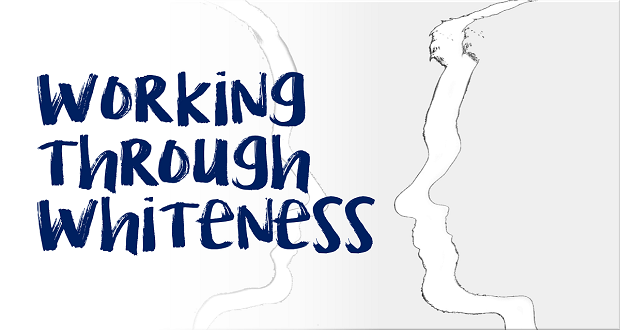
Given the demographic changes taking place in this country, as well as the increasing globalization of our businesses, diversity will continue to be a key focus for all organizations, big and small. In terms of race or ethnicity, for example, the U.S. Census Bureau (2015) estimates that by 2044, the United States is expected to become a “majority-minority” nation given that more than half (about 56%) of all U.S. Americans are projected to belong to a “minority” group (that is, any group other than non-Hispanic White.) In addition, by 2060, nearly one in five of the nation’s total population is projected to be foreign born.
Putting it simply, diversity is everything that makes us unique. In addition to race, gender, and ethnicity, it refers to aspects such as socio-economic status, religious affiliation (or non-affiliation), sexual orientation, nationality, communication style, age, parental status, education level, and many other aspects seen, or unseen, such as a learning disability. All these differences affect how individuals think and behave and it is important that you understand the impact of these differences in the workplace and learn how to work effectively with the complexities surrounding them. For example, Muslim employees who pray five times a day could be impacted in a negative way by midday staff meetings. Inclusive managers should be aware of these cultural issues, understand their impact (on the employee and the organization), and find workable solutions, because, as many studies have demonstrated, employees can only do their best if they can bring their whole selves to work.
It is also important to understand that diversity means different things to different organizations. For a historically Black institution, for example, diversity could mean hiring more White faculty and staff; hospitals may be actively recruiting male nurses, and companies taking their businesses overseas may be in need of language diversity. It is, therefore, imperative that organizations embarking on their diversity and inclusion journey put some thought into what “diversity” actually means in the context of their organization, their line of business, and the clients they serve.
Nowadays, organizations are actively seeking to diversify their workforce, not only because of the impact of demographic changes and globalization, but also because of the proven benefits diversity can bring. The majority of top companies already agree that diversity is a key driver in fostering innovation in their organizations. In the book Managing Diversity in Corporate America, the Rand Corporation cites some of the benefits experienced by diverse organizations. They range from financial gains, to a healthier work environment, to greater employee satisfaction. Diverse organizations are more “in-sync” with the demographics of the markets they operate in, as well as the customers that benefit from their services.
Practical approaches to recruiting and retaining diverse candidates
Nowadays, an increasing number of candidates list diversity as a major factor in deciding where to work. This is especially true for candidates who hold historically marginalized identities, and who want to know how diverse the organization is, and if diversity is indeed taken seriously. The result is clear: the more diversity you have, the more diverse candidates you are likely to attract. Below are a few strategies you can implement to ensure increased diversity in your organization:
Nowadays, an increasing number of candidates list diversity as a major factor in deciding where to work. This is especially true for candidates who hold historically marginalized identities, and who want to know how diverse the… Share on X- Develop a comprehensive D&I plan. Your organization should develop a strategic plan that identifies the goals to be achieved related to diversity and inclusion. Ideally, the plan should be institutionalized and everyone in the organization needs to consider it their top priority. When developing the plan, seek input from individuals at all levels of the organization. It is also imperative that, from its inception, the leadership publicly show support for the plan and make its implementation a priority. A clearly defined and focused D&I strategy can help your organization improve its bottom line, attract top talent, and retain high-potential employees.
- Dispel the notion that there aren’t enough qualified candidates. This is often known as “deficit model recruiting.” According to the model, there “just aren’t enough” qualified diverse candidates, and those few who might be qualified won’t come to your organization. If they do come, they won’t stay long because they will soon leave for another company. Contrary to this belief, the reality is that many individuals of color and other diverse individuals will consider your organization—if their qualifications are seriously considered, and if they feel welcomed and supported.
- Make sure your job announcements are crafted in a way that attract diversity. Job announcements can be the single most effective tool in recruiting anyone, especially qualified, diverse applicants. However, in order for diverse applicants to become interested in your organization, they must find something in it that sets it apart from any other organization they might be considering. Start by stating that a candidate’s commitment to and experience with diversity and inclusion is one of the requirements for the job. This often leads to diverse candidates researching the position and the organization. They also start entertaining the idea that this may actually be a place where I can come in, fully use my skills, and be myself.
- Make sure search committees are properly trained to bring diversity in. You can enhance your search process by holding trainings focusing on topics such as the importance of valuing diversity, developing cultural competence skills, and understanding the impact of unconscious bias in candidate selection. You can also ensure that every search committee has a “diversity advocate” who is empowered to promote and keep diversity goals in the forefront during the search. I have served in this role in many searches. In that capacity, one of my responsibilities was to ensure every aspect of the search was conducted with diversity in mind and we were not inadvertently keeping diversity out. In one search, for example, I suggested we changed the question “Did the candidate speak clearly and concisely?” to “Did the candidate get his/her point across?” The former refers to a style preferred by direct communicators. Had we kept that question in the screening process, we would have penalized those candidates who also made their point across but did it in a more indirect manner, for example, by telling a story first. This leads me to my next diversity recruiting strategy.
- Stop looking for individuals to “fit” into your organization.” As I argued in the article Want to bring diversity in? Stop looking for the “best fit,” cultural fit is described as the equivalent of a candidate having passed the “beer test.” In other words, this is someone you would want to hang out with. The problem with this strategy is that, while your newly-found “beer buddy” may indeed be able to do the job, hiring for cultural fit inevitably gets in the way of increasing diversity in the organization. If, therefore, you want to increase the diversity of your workforce, ban cultural fit as a reason for rejecting a candidate—because this is often code for: you don’t look, act, or think like us. More worrisome is the fact that this attitude may be an indication that unconscious bias is at play. While we do have laws in place that prevent companies from openly discriminating against candidates on the basis of race, gender, or religious affiliation, we all know it is still happening. If your goal is to increase workplace diversity, look instead for “cultural add” in candidates. This empowers you to bring candidates in to help shape the culture of your organization, rather than fit into it.
- Highlight your organization’s diversity growth and reward its successes. Your organization needs to take every opportunity to talk about its successes with diversity—even if progress in increasing diversity has not been as great as desired. This helps you make clear to potential candidates that diversity is indeed valued and that you are continuing to make strides. Departments and units that achieve goals or milestones related to diversity should be recognized. Their success stories should be shared because their strategies may be of assistance to other departments. You can heighten the importance of diversity within the organization by making sure individuals of diverse backgrounds are routinely portrayed and their achievements recognized – especially in the organization’s marketing materials. Also consider implementing a Diversity Achievement Award based on nominations from staff and supervisors to recognize significant contributions in this area.
- Brief potential candidates on what the organization and the community have to offer. This is a strategy that is often ignored. This is important because candidates are not only making a decision to work for your organization, but they are also deciding if they want to make a life for themselves (and possibly their families) in a new community. A person who is relocating and has the full support of their family is more likely to have a healthier stay in your organization. You should inform your candidates about what it is like to live in the community and showcase what it has to offer. For example, in the relocation training I developed for a family transferring from Brazil to Utah, I provided them with information about local schools, churches, hospitals, restaurants, recreational activities, quality of education their children would have, and the level of healthcare available in the community. Also, consider establishing networking and support groups for all new employees. This is different than providing certain types of services for employees of color exclusively, which might, unintentionally, lead to feelings of marginalization or a sense they are less qualified or need greater support or assistance. When I relocated to the Twin Cities, the institution hiring me assigned me my own “navigator.” In fact, all new employees were assigned one. This individual became my go-to person whenever I had questions regarding the job, the institution, or the community.
- Assessment is key. Without assessing your recruitment efforts, you will be unable to measure their effectiveness. Focusing solely on how you are reaching your numerical benchmarks, though, is not enough. You also need to look at how individuals are experiencing the organization; if they leave, you need to know why. Conducting a climate assessment is a significant step towards understanding how truly inclusive your organization is, and to ensuring a workplace where all individuals feel welcome, that they belong, and can fully use their talents towards contributing to the success of the organization. Exit interviews are also important. They can help you understand the reasons for your employees’ departure, if it is climate related, as well as if they took advantage of any retention services or programs that exist. This is important considering that the cost of hiring a new employee is typically 20% or more of that employee’s annual salary. A thorough examination of your recruitment practices, as well as your retention efforts, will help you look at what you are doing, gain a deeper understanding of why it is not working, and then develop more targeted solutions. For example, if you identify that certain departments have a hard time retaining minority employees, this allows you to focus your efforts on those departments.
You may have noticed that whenever I talked about “recruitment,” I also talked about “retention.” Likewise, anytime I mentioned diversity, I also mentioned “inclusion.” That is because one cannot exist without the other. In fact, your efforts in bringing diversity in will not prevail unless you pay equal attention to creating an inclusive organization.
While diversity is about whom you recruit, inclusion is about ensuring your organization is a place where every employee feels welcomed, respected, supported, valued, and that they can bring their authentic self to work. In other words, no significant parts of their identities, be it their race, sexual orientation, political affiliation, etc., have to remain “hidden.” Furthermore, these identities are in the forefront whenever decisions are made and practices are implemented. For example: What holidays, other than Christmas, are celebrated in the organization? When meals are catered, are dietary restrictions taken into consideration? Are flexible hours a possibility for those employees who have to pick up or drop off their children at school? Are transgender employees able to use the restroom that matches who they are? Do you have an organization where courageous conversations can take place?
Whenever I talked about “recruitment,” I also talked about “retention.” Likewise, anytime I mentioned diversity, I also mentioned “inclusion.” That is because one cannot exist without the other. Share on XIt is important that you realize that a diverse workforce does not guarantee an inclusive culture. Therefore, it is essential that companies move beyond compliance-based representation into creating truly inclusive workplaces. A truly inclusive organization embraces the diversity that all employees bring to work, and creates the conditions for everyone to thrive.
There are many strategies organizations can use to increase their diversity. However, you will not retain your diverse employees unless you pay attention to the climate in your organization. It is also important to move from surface-level strategies (i.e., brochures, artwork, images on the website) towards ensuring that diversity and inclusion are truly embedded into the organization’s culture. Everything you do needs to be done with the framework of diversity and inclusion in mind.
Everyone needs to take responsibility for making the organization welcome to all. Accountability is also important, and the most successful companies tie incentives to the completion of D&I goals. Through data tracking and analysis, you will be able implement strategies that will result in a more diverse workforce which will, in turn, lead to innovation, increased employee engagement, and all the other proven benefits diversity can bring to an organization. In order to reach your D&I goals, you need to not only actively pursue diverse candidates, but also make sure your organization is a place where all individuals feel welcomed, valued, supported, and feel they can bring their authentic selves to work, because, in the end, this is what will make them stay.



















I like what you said about religion, race, and orientation and how that affects everyday business in the office like how to celebrate holidays. I imagine that most people that are not part of a minority don’t consider how their identity might affect those things until someone different comes along. If I had a company to staff and hire, I would want to make sure that those kinds of things would be enjoyable for everyone, as much as possible.